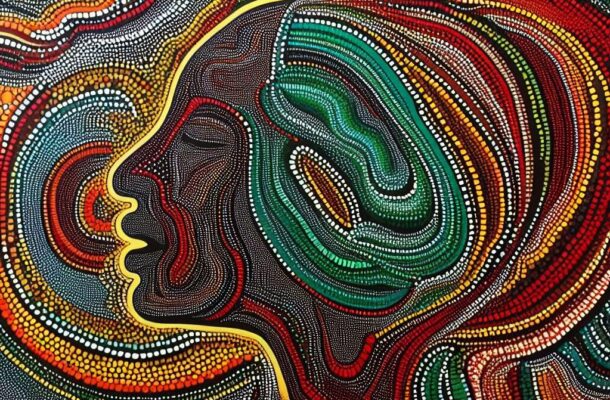Progress is still possible

Being wise after the event can be a self-indulgent and fruitless exercise. Conversely, it may be used to distil information from evidence arising out of that event. My contention in previous articles published by “Open Forum” was that the referendum was likely to fail and that the question of constitutional recognition of Indigenous people should have been separate from the Voice. Now that the result is known, some further observations are perhaps worth venturing.
In his election victory speech, the Prime Minister, I think unwisely, said: “on behalf of the Australian Labor Party, I commit to the Uluru Statement from the Heart in full.” He later attempted to convince the nation without first securing consensus within the Labor Party, let alone bipartisan political support. Clearly, however, the Voice referendum result cannot be interpreted to mean that 60% of Australians are indifferent to the disadvantage of Indigenous people, based on their political allegiance.
Some time ago, Uluru statement architect, Noel Pearson, advised the “Yes” campaign to elevate the goal of recognition of Indigenous Australians over the creation of the Voice. Ironically and regrettably, it seems that the government wasn’t listening.
Formal Recognition
There has long been overwhelming support for formal constitutional recognition of First Nations people. A separate referendum question to formally recognise Aboriginal and Torres Strait Islander peoples in the constitution might have been another step on the way to self-determination. In view of the history of referendums, especially the republic referendum, combining the recognition and Voice questions doomed the Voice to failure.
The defeat of the referendum is no cause for celebration. It is lamentable that people were led to believe in a condescending way that the future wellbeing of Indigenous people rested entirely on the Voice. The PM should now explain why the government spent so much money attempting to win support for the idea that an essential nexus exists between recognition and a conceptual ‘Voice to Parliament’. The original AEC estimate of the referendum cost was $450 million.
The ‘Yes’ campaign seems to have become obsessed with historical and identity issues while failing to address the substance of the referendum question itself. We had no idea how the Voice would have been constituted or elected, but the demographics show it would be naive not to consider the Voice as a potentially significant political force of the future. Opportunists and radicals might soon have been manoeuvring for a seat on the Voice to pressure MP’s, especially crossbenchers and those in marginal seats.
There would be numerous ‘No’ voters who are disappointed and saddened by accusations of ignorance, fear, unkindness and even racism against them. Despite such accusations there does not appear to be any evidence of organised resistance to continuing efforts to ‘Close the Gap”.
The ‘No’ vote in New South Wales vote was 60%. However, the NSW Stolen Generations Reparations Scheme will continue to provide ex-gratia payments of $75,000 to living Stolen Generations survivors. They are also eligible for one-off payments of $7,000 to assist with funeral expenses.
There were also charges that misinformation and fearmongering had a significant impact on the result. But general election campaigns typically include well-orchestrated streams of disinformation and misinformation. However, they produce only marginal shifts in electoral sentiment. In that context, such charges are statistically problematic.
Comparing two-party preferred percentages for general elections to the referendum percentages, reveals that the margin between the yes and no votes was much wider than in general elections and the result did not reflect normal party allegiances.
The National Indigenous Australians Agency
‘Yes’ voters can be encouraged because the referendum result virtually guarantees future government support of The National Indigenous Australians Agency (NIAA). The NIAA employs around 1,300 people, many of whom identify as Indigenous. It is a relatively new organisation with a comprehensive action plan that relies on growing roots into indigenous communities.
Most people are not aware of the agency’s existence or its objectives which are a close reflection of the proposed Voice. Indeed, the NIAA would presumably have been responsible for implementing the Voice recommendations according to parliamentary approval and the Minister’s directives.
The NIAA ‘vision and purpose’ statements well and truly reflect the Uluru Statement from the Heart:
NIAA Vision – “Aboriginal and Torres Strait Islander peoples are heard, recognised and empowered.”
NIAA Purpose – “The National Indigenous Australians Agency works in genuine partnership to enable the self-determination and aspirations of First Nations communities. We lead and influence change across government to ensure Aboriginal and Torres Strait Islander peoples have a say in the decisions that affect them.”
The ‘Yes’ case would have been strengthened if the Minister had informed the public about how a Voice would achieve what the NIAA could not.
The NIAA has a budget of more than $2 billion, not including substantial funding from other agencies and special accounts. I wish the Minister for Indigenous Australians, Linda Burney, success in bringing the NIAA vision and purpose to fruition.

Max Thomas, Dip. Agric. (retired) worked in the public sector and in private consulting on a range of land, water and waste management projects. He prepared guidelines for irrigation with recycled water for EPA Victoria and developed a number of Environmental Management Systems in the water industry.












